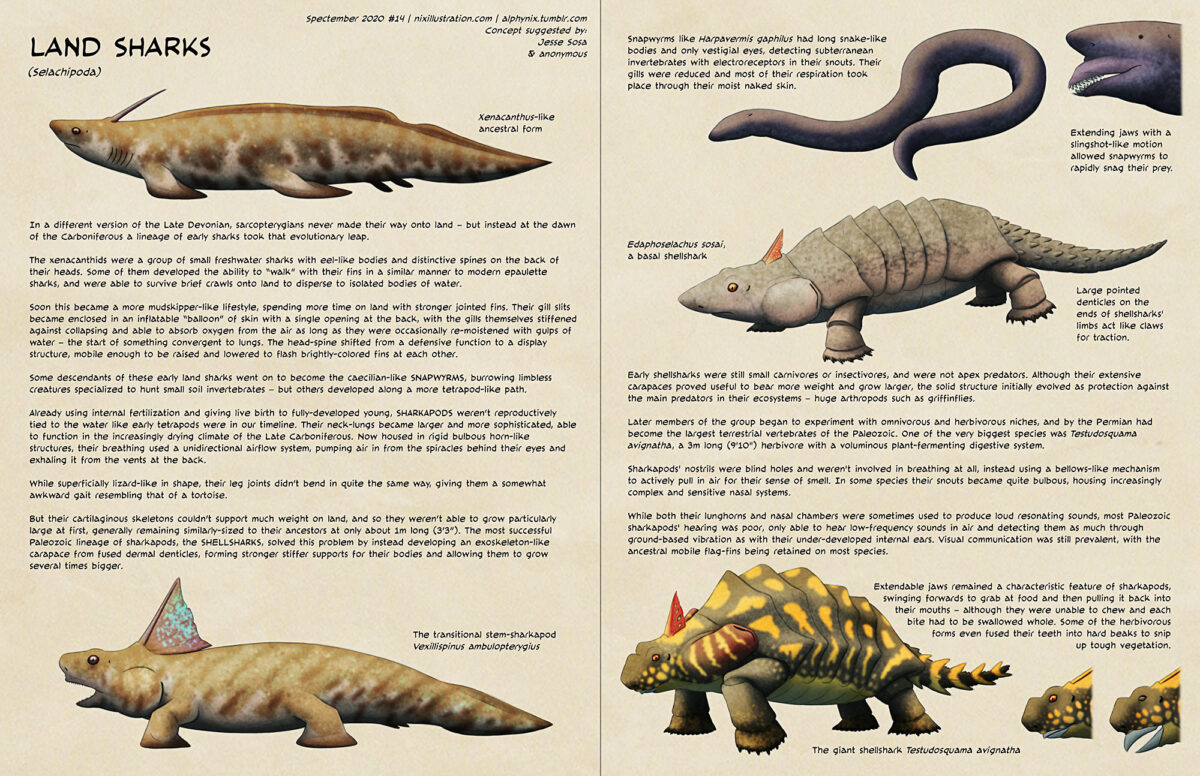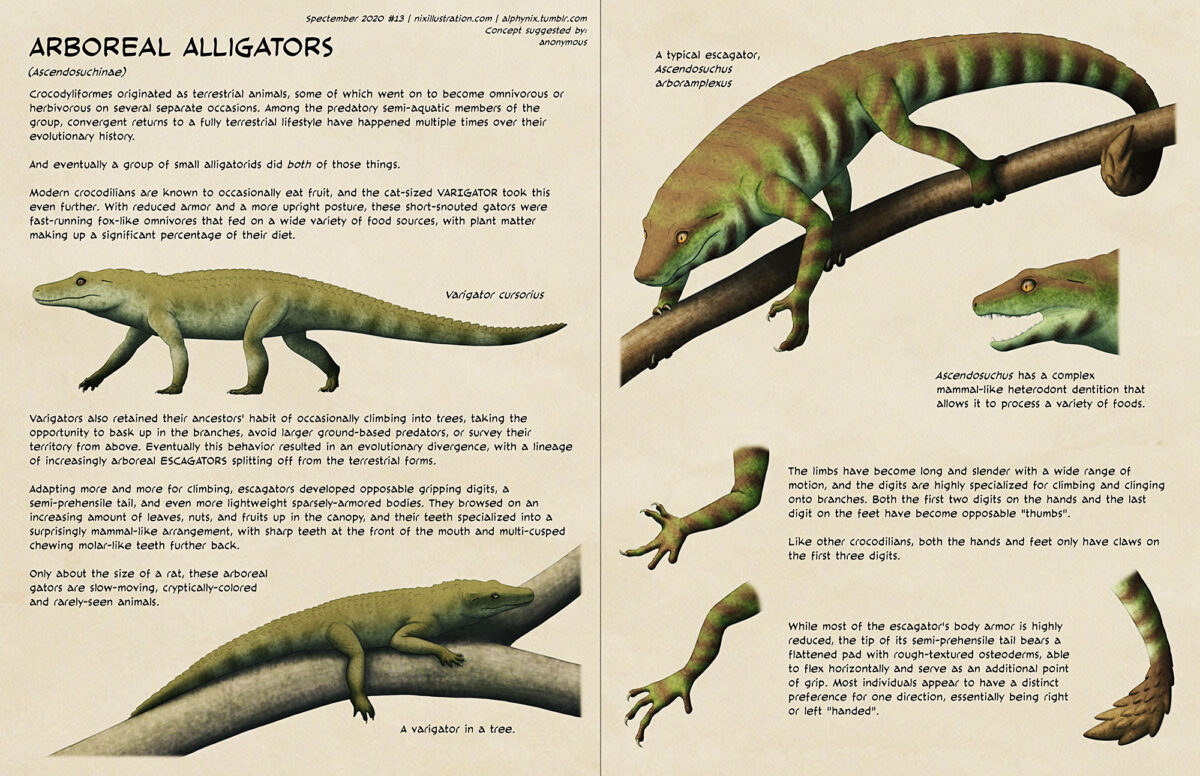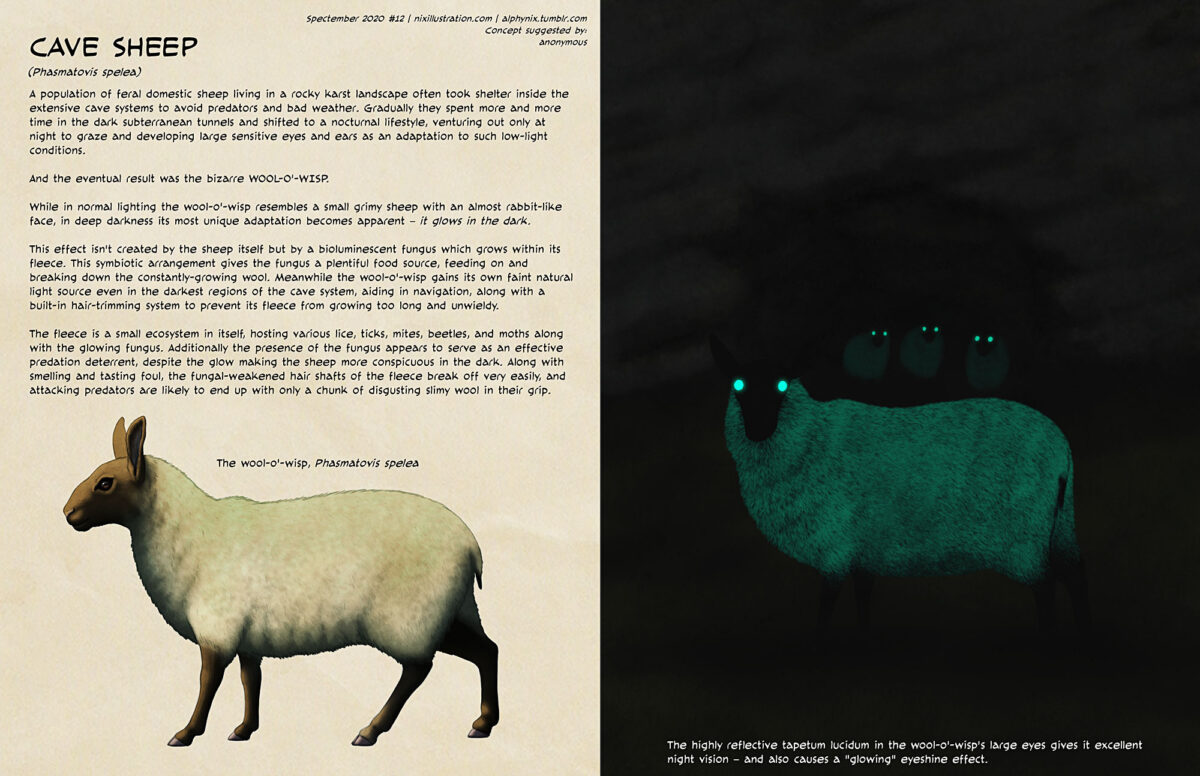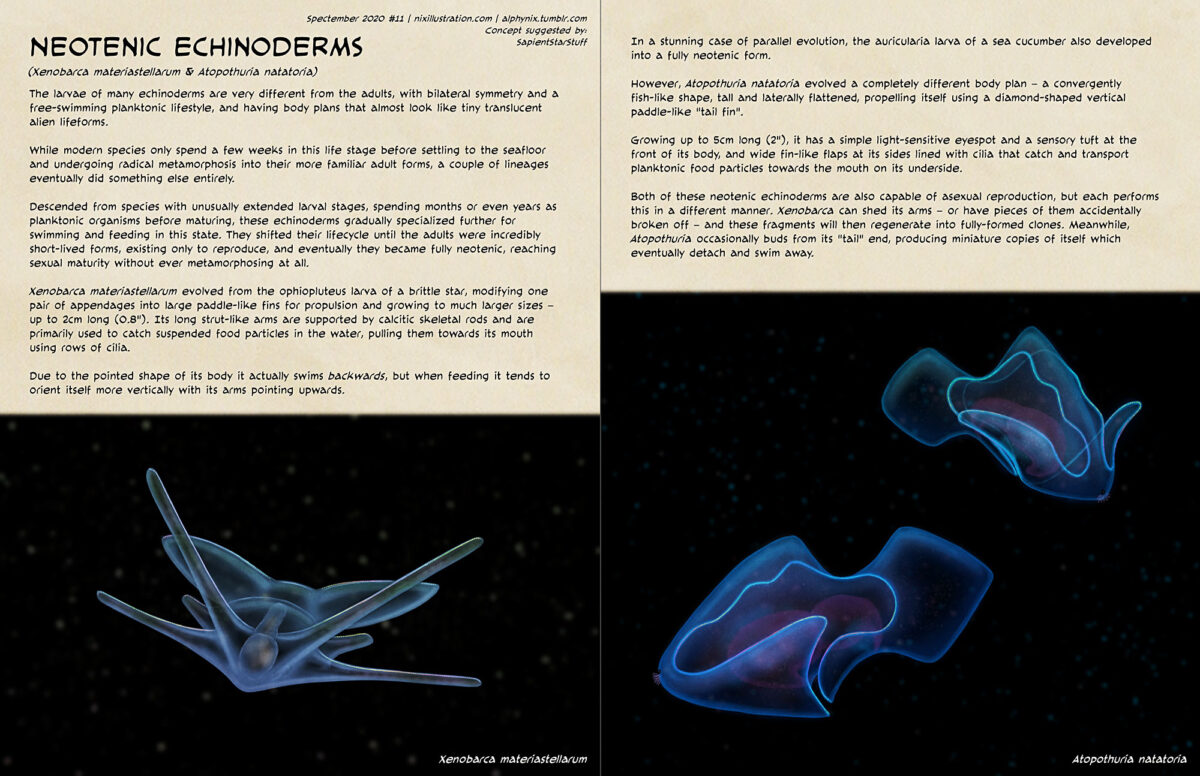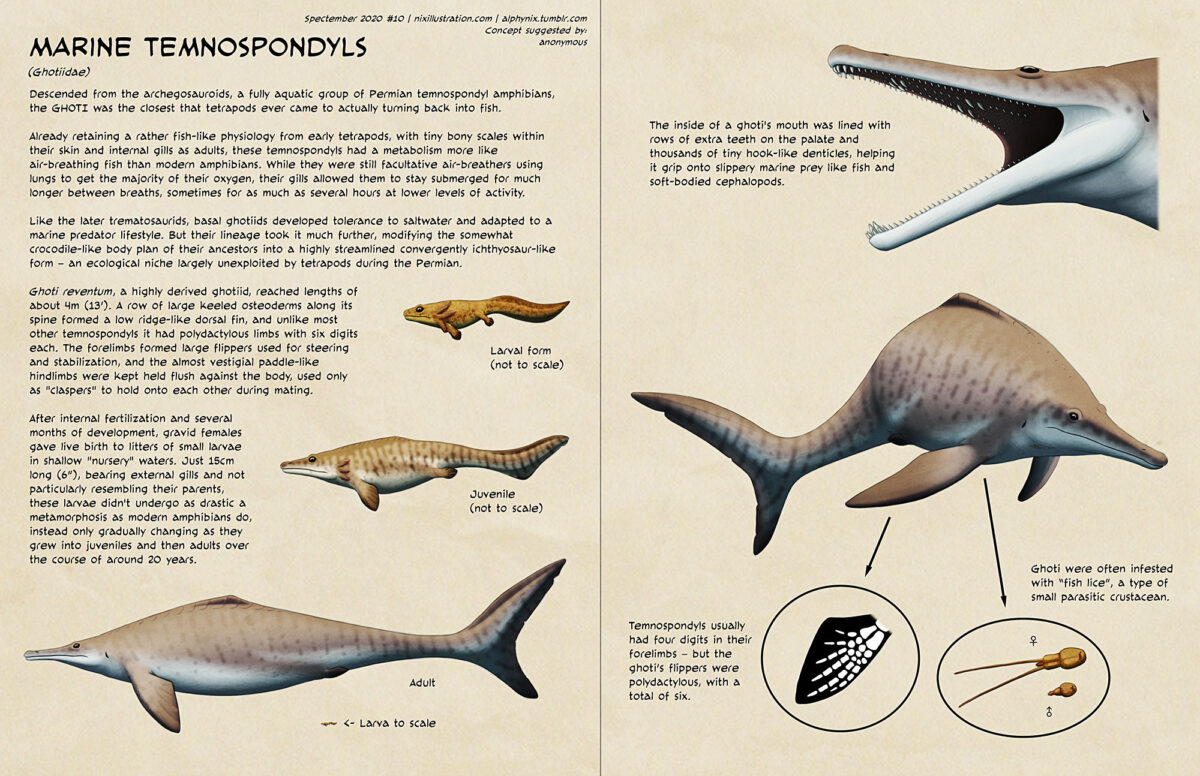C. M. Kösemen, also known as “Nemo Ramjet” or “Memo”, is a Turkish artist and researcher known for his paleoart, photography, surreal and sometimes Gigeresque imagery, and speculative evolution work.
His 2006 book All Tomorrows explores a speculative future in a similar manner to Last and First Men and Man After Man. While often haunting and strange, and occasionally silly or oddly touching, potential readers of All Tomorrows should be aware of possibly disturbing content, since it does contain some nudity and body horror along with plot elements of eugenics, xenophobia, religious fanaticism, and repeated genocides.
Beginning close to our own present day, the story covers many millions of years of evolution and genetic engineering, all framed as the “best guess” reconstructed history of humanity as assembled by a paleoanthropologist living a billion years from now.
It starts off fairly tame, with minor anatomical divergences in Martian colonists, a war for planetary independence, and the development of a genetically engineered spacefaring subspecies of human – but then things start to get weird. What is initially believed to be a complete lack of other intelligent life in the Milky Way is thrown into question by the discovery of a fossil of an unmistakably Earth-based lifeform on a distant alien world – hinting at the existence of an incredibly ancient and powerful civilization, capable of transplanting and genetically modifying species for unknown purposes.
…A civilization which eventually revisits the human-colonized galaxy, and proves to be intensely hostile. In the aftermath of this devastating first contact, posthuman survivors evolve and rediscover each other, fight more wars, contact other aliens, and even return to the long-lost Earth.
In 2008 Kösemen completed his most well-known speculative evolution project – Snaiad, a huge worldbuilding endeavor that depicts the natural history of an alien planet.
A world much older than the Earth, the planet Snaiad experienced multiple cataclysmic mass extinctions over its eight billion years of evolutionary history, essentially “resetting” complex life a few times. While there are a couple of enigmatic hints in the fossil record of what may have been past civilizations, the fauna at the time of human colonization contains no sapient species.
The main branch of Snaiadi life catalogued in the project are the highly diverse “vertebrates“, which are superficially convergent with Earth tetrapods – but their internal skeletons are hydrocarbon-based, and their four legs are formed from the fusion of eight ancestral limbs. Their primary muscles are hydraulic, evolved from the water vascular system of a sea cucumber-like ancestor, and function based on pushing rather than pulling. What appears to be a “head’ is actually a genital stalk sporting pseudo-jaws often used for food processing, while phallic-looking structures growing from the creatures’ chests contain their true heads and mouths.
An updated version of Snaiad is currently in development, with the goal to eventually publish it in book form.
Kösemen was also a co-author of the 2012 book All Yesterdays, along with Darren Naish and John Conway. Arguing that much of conventional paleoart was outdated, overly conservative, shrink-wrapped, and inaccurate compared to our understanding of animal anatomy and behavior, All Yesterdays mainly explored speculative-but-plausible reconstructions of prehistoric life – and was incredibly influential on modern paleoart, being a major part of the ongoing “second dinosaur renaissance”.
The free “sequel” e-book All Your Yesterdays in 2013 collected together images from many other artists, and featured even more paleontological speculation. Notably one of its entries accurately predicted a later discovery – the speculative filter-feeding “Bearded Ceticaris” by John Meszaros turned out to have had a real-life analogue in the form of Tamisocaris borealis.
2013 also saw the publication of Cryptozoologicon, again a collaboration between Kösemen, Naish, and Conway. Applying speculative biology to various cryptids, this book reviews the evidence for each featured creature and then presents a playful reconstruction of their possible identity and evolutionary history.
Next week: bird is the word.

